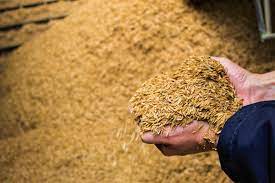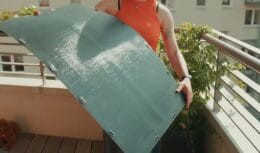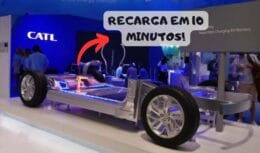
In order to reduce impacts on nature, SC plant and industries from other sectors use rice waste to generate clean energy, manufacture ceramic products, among others
The thermoelectric plant of Fumacense Alimentos was responsible, throughout 2021, for generating energy at its headquarters unit of its cereal industry, which is located in Morro da Fumaça, state of SC. At the end of 2021, after carrying out a balance of the final numbers of the structure over the last 12 months, it was possible to observe that a very significant volume of rice husks was not discarded in the environment, on the contrary, the rice husks were reused for assist in the operation of equipment with the use of clean and renewable energy.
Read also
Clean energy from rice husk generates around 6.720 Mw/h
According to the latest data record, in 2021 the thermoelectric plant in SC exceeded expectations for 2020 and transformed more than 31 thousand tons of rice husks into clean and renewable energy, generating around 6.720 Mw/h.
According to the coordinator of the Fumacense Alimentos Thermoelectric Power Plant, Lucas Tezza, when making a comparison, the same amount that was generated by the plant in SC would be more than enough to supply just over 5 homes occupied by up to three people, during a whole year.
Tezza pointed out that the company has always sought to maintain its focus on sustainability issues, something that has been strengthened and expanded over the last few years. In addition, the coordinator of the thermoelectric plant highlighted the reuse of rice husks, as the ash generated during the burning process inside the thermoelectric plant is also reused.
According to Tezza, the ashes are sent to ceramics, steel and cement manufacturing companies in SC, SP and MG, which reuse them in their production processes.
In addition to clean and renewable energy, industries from other sectors along with the rice mill in SC help to reduce impacts on the environment, reusing waste rice husks in the manufacture of bricks and other ceramic materials.
From a pilot project that emerged in the south of SC, the rice mills, by joining with the ceramics industries, are recording very positive results for both sectors, in addition to contributing directly to the reduction of effluents and waste that may cause impacts on the environment.
Tezza reported that this partnership between sectors has been in place for nearly two years and came about with the same objective that Fumacense Alimentos already had, which is to also reuse residual ashes, to avoid discarding these materials in nature.
The residual ashes have a high amount of silica, which directly contributes to the result of the product. When mixed with 15% of this residue in the clay mixture, the result is lighter bricks, maintaining the standard of resistance.
Get to know Fumacense Alimentos
Fumacense Alimentos is currently a national reference in the production and manufacture of rice-based products. The rice industry owns the Kiarroz, RisoVita and Kifeijão brands, in addition to Campeiro, Vilarroz and the Boby line, which is focused on animal feed. Located in Morro da Fumaça, in the south of SC, the rice mill originated in 1970 and, currently, the company has two other production plants, in RS, in the city of Alegrete, and another in PE, in the city of Pombos.












